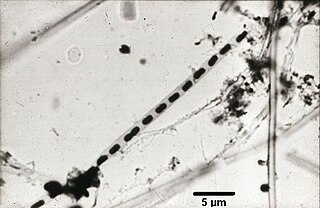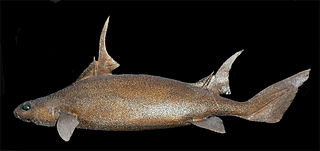
Solenodons are venomous, nocturnal, burrowing, insectivorous mammals belonging to the family Solenodontidae. The two living solenodon species are the Cuban solenodon and the Hispaniolan solenodon. Threats to both species include habitat destruction and predation by non-native cats, dogs, and mongooses, introduced by humans to the solenodons' home islands to control snakes and rodents.

Pallas's sandgrouse is a medium to large bird in the sandgrouse family.

The Comamonadaceae are a family of the Betaproteobacteria. Like all Pseudomonadota, they are Gram-negative. They are aerobic and most of the species are motile via flagella. The cells are curved rod-shaped.
Pulsus paradoxus, also paradoxic pulse or paradoxical pulse, is an abnormally large decrease in stroke volume, systolic blood pressure and pulse wave amplitude during inspiration. Pulsus paradoxus is not related to pulse rate or heart rate, and it is not a paradoxical rise in systolic pressure. Normally, blood pressure drops less precipitously than 10 mmHg during inhalation. Pulsus paradoxus is a sign that is indicative of several conditions, most commonly pericardial effusion.

The Hispaniolan solenodon, also known as the agouta, is a small, furry, shrew-like mammal endemic to the Caribbean island of Hispaniola. Like other solenodons, it is a venomous, insect-eating animal that lives in burrows and is active at night. It is an elusive animal and was only first described in 1833; its numbers are stable in protected forests but it remains the focus of conservation efforts.

The sailfin roughshark is a species of dogfish shark in the family Oxynotidae, found in the eastern North Atlantic from Scotland to Senegal between latitudes 61°N and 11°N, at depths of between 265 and 720 m. Its length is up to 1.2 m (3.9 ft).
The Nicaraguan harvest mouse is a species of rodent in the family Cricetidae. It is found in Costa Rica and Nicaragua.

Fukuivenator is an extinct genus of maniraptoran theropod dinosaur from the Early Cretaceous of Japan.

Xanthostemon paradoxus, commonly known as bridal tree or northern penda, is a shrub or tree species in the family Myrtaceae that is endemic to Australia.
Lepidocyrtus cinereus is a species of slender springtail in the family Entomobryidae.
Lepidocyrtus neofasciatus is a species of slender springtail in the family Entomobryidae.
Embidopsocus is a genus of booklice in the family Liposcelididae. There are more than 40 described species in Embidopsocus.

Lepidocyrtus cyaneus is a species of slender springtail in the family Entomobryidae. It is found in Europe.
Althos is a genus of leaf-footed bugs in the family Coreidae. There are more than 20 described species in Althos.

Lepidocyrtus lignorum is a species of slender springtail in the family Entomobryidae. It is found in Europe.

Lepidocyrtus curvicollis is a species of slender springtail in the family Entomobryidae. It is found in Europe.
Lepidocyrtus floridensis is a species of slender springtail in the family Entomobryidae.

Dissocarpus paradoxus is a shrub species of inland Australia, also known by the common names of cannonball burr or curious saltbush.

Metoecus paradoxus, also known as the wasp nest beetle and eyelash bug, is a species of Metoecus in the family Ripiphoridae.
Paradoxus is a genus of moths of the family Yponomeutidae.











